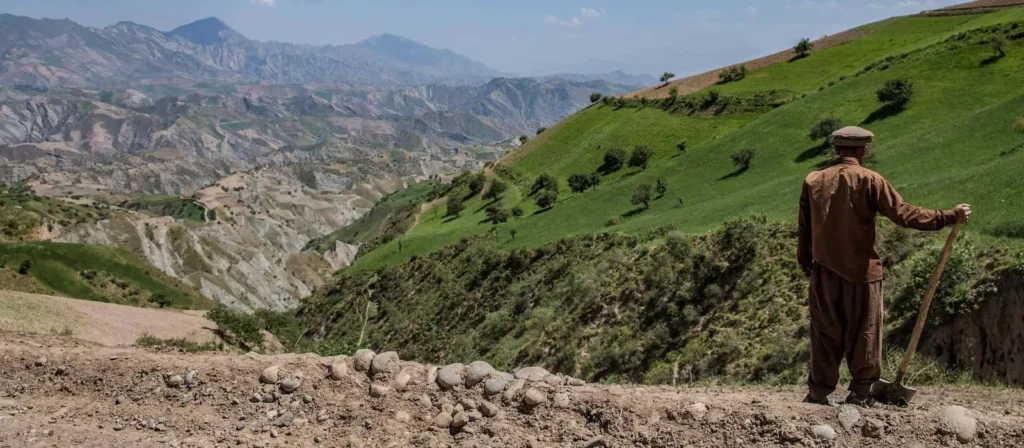The phrase “Afghanistan: The Heart of Asia” has evolved from Allama Iqbal’s poetic metaphor into a geopolitical reality shaping continental dynamics. As Afghanistan marks four years under Taliban rule in August 2025, Iqbal’s visionary insight remains profoundly relevant: he recognized that Afghanistan’s destiny would determine Asia’s fate, transcending mere geography to reveal that this landlocked nation is the nerve center of regional stability. Today, as powers navigate Taliban governance, humanitarian crises, and economic challenges, Iqbal’s timeless maxim guides our understanding: “If Afghanistan is volatile, Asia is volatile; if Afghanistan is peaceful, then Asia will be peaceful.”
Iqbal’s Poetic Vision of Afghanistan’s Central Role
Allama Iqbal expressed Afghanistan’s pivotal importance in Persian verse:
آسیا یک پیکر آب وگل است
ملّت افغان در آن پیکر دل است
از فساد او فساد آسیا
در گشاد او گشاد آسیا
Translation:
“Asia is a body of water and clay,
The Afghan nation is the heart within that body.
If they fall into ruin, so will all of Asia.
In its prosperity lies the prosperity of Asia.”
He elaborated further:
تا دل زندہ ہے تن زندہ ہے
اے کہ افغان کو دل ایشیا کہا
دل کے مرنے سے یہ تن مر جائے
جان ایشیا میں یہی جان ہے
Translation:
“As long as the heart lives, the body lives,
O you who called Afghanistan the heart of Asia!
With the death of the heart, this body will die,
This life is the very soul of Asia’s existence.”
These verses encapsulate the inseparable bond between Afghanistan’s well-being and Asia’s overall stability.
The Strategic Geography Behind the Concept
Afghanistan’s designation as the heart of Asia stems from its unique position at the crossroads of four major regions: Central Asia, South Asia, East Asia, and West Asia. This landlocked nation shares borders with six countries and sits at the center of what encompasses 27% of Earth’s land area. The ancient Silk Route passed through Afghan cities like Balkh, Herat, and Kabul, establishing trade corridors that remain vital today.
Modern infrastructure projects validate this strategic importance. Four of the six corridors under the Central Asia Regional Economic Cooperation Program (CAREC) pass through Afghan territory, making Afghanistan an indispensable link between landlocked Central Asian states and South Asian markets. The country serves as a natural gateway to Pakistani seaports and the Indian Ocean, offering Central Asian republics their most direct route to global maritime trade.
Economic Potential of the Afghanistan Central Position
Despite ongoing challenges, the Country possesses enormous economic potential that could transform regional prosperity. The country is estimated to hold $3 trillion worth of mineral resources, including substantial deposits of lithium, copper, iron ore, and rare earth elements. These resources represent not just Afghan wealth but potential catalysts for regional economic integration.
Recent developments demonstrate growing recognition of this potential. Bilateral trade between Russia and Afghanistan is expected to reach $3 billion by 2025, while Central Asian countries are increasingly engaging with Afghanistan through pragmatic economic partnerships. The resumption of major infrastructure projects, including the Trans-Afghan railway linking Uzbekistan to Pakistani seaports and the 1,468-kilometer Mazar-e-Sharif-Herat-Kandahar railway corridor, illustrates how Afghanistan’s stability directly impacts regional connectivity.
Regional Security and Continental Stability
The security implications of Afghanistan’s central position cannot be overstated. The country’s internal stability, or lack thereof, has cascading effects throughout the region due to interconnected ethnic groups and porous borders. Afghanistan’s complex dynamics have at times contributed to the emergence and regional spread of disruptive groups across South and Central Asia.
The Global Peace Index has consistently rated Afghanistan as the most unstable country for the past four years, with direct consequences for neighboring nations. The return of over 665,000 Afghan refugees from Pakistan and additional migration pressures from Iran have created new regional instabilities, validating Iqbal’s insight about the spillover effects of Afghanistan’s internal situation. However, the inverse is equally true. When Afghanistan achieves relative stability, it can serve as a stabilizing force for the entire region. Central Asian republics are increasingly recognizing that “building a wall around Afghanistan” is counterproductive to regional stability, leading to more pragmatic engagement strategies.
The Heart of Asia Process: Institutionalizing Cooperation
The Heart of Asia–Istanbul Process, established in 2011, represents the international community’s formal recognition of Afghanistan’s pivotal role. This initiative places Afghanistan at the center of regional cooperation efforts, involving 15 participating countries focused on confidence-building measures across political, security, economic, and cultural dimensions.
Recent diplomatic developments suggest growing regional acceptance of this approach. Russia’s formal recognition of the Taliban government in July 2025 has potentially paved the way for Central Asian states to follow suit, driven by pragmatic considerations of regional stability and economic cooperation rather than ideological positions.
China’s Strategic Vision for Regional Connectivity
China’s engagement through the Wakhan Corridor project and potential extension of the China-Pakistan Economic Corridor (CPEC) into Afghanistan demonstrates Beijing’s long-term strategic vision. Chinese investments in Afghanistan’s mineral resources and infrastructure development reflect recognition that Afghanistan’s role as a “land bridge between Central Asia and South Asia” is too strategically important to ignore. This approach aligns with China’s broader Belt and Road Initiative, where Afghanistan serves as a critical component of regional connectivity linking Chinese markets with Central Asian resources and South Asian populations.
Contemporary Challenges and Iqbal’s Enduring Wisdom
Despite its potential, Afghanistan faces significant obstacles that impact regional stability. The Taliban Administration’s significant limitations on the rights of women and girls have raised international concerns, resulting in Afghanistan being the only country where girls currently face restrictions on secondary and university education. These policies create barriers to international recognition and full economic cooperation.
Despite ongoing challenges, Afghanistan’s economy experienced growth of 2.5% in 2024, reflecting gradual progress. Continued efforts are needed to enhance living standards, especially for the 23.7 million people reliant on humanitarian assistance. The 47.6% increase in the trade deficit in 2025 highlights areas where further economic strengthening can be pursued.
Conclusion: The Path Forward
As Allama Iqbal envisioned nearly a century ago, Afghanistan’s fate and Asia’s stability remain inextricably linked. The “Afghanistan: The Heart of Asia” concept has evolved from a poetic metaphor to a concrete geopolitical framework, with regional powers increasingly recognizing that pragmatic engagement rather than isolation serves broader stability interests. The challenge ahead lies in balancing legitimate international concerns with the practical reality that Afghanistan’s strategic position makes it central to Asian prosperity. Whether this recognition translates into sustainable peace and development for Afghanistan, and by extension, regional stability, remains the defining geopolitical challenge of our time.



